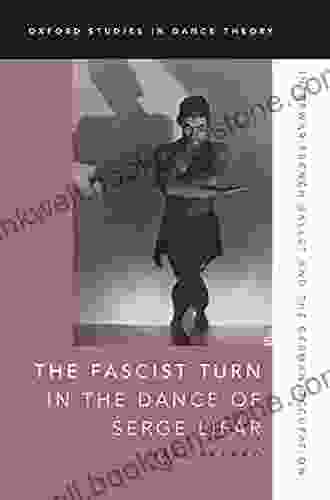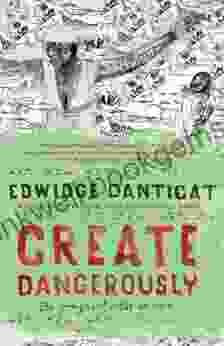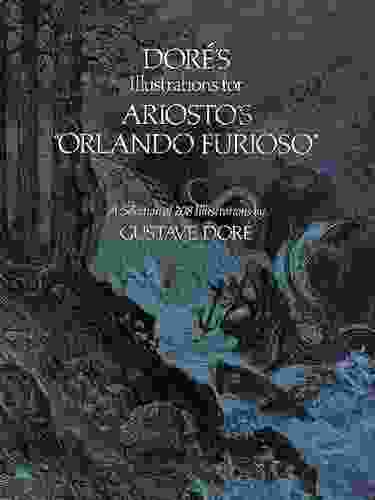Interwar French Ballet and the German Occupation: Exploring the Resilience and Evolution of Dance Amidst Turmoil

Abstract
This article delves into the captivating history of French ballet during the interwar period and the tumultuous years of the German occupation. Drawing from the comprehensive work "Oxford Studies in Dance Theory," it sheds light on the challenges, resilience, and transformative advancements that shaped French ballet during this era.
5 out of 5
| Language | : | English |
| File size | : | 31943 KB |
| Text-to-Speech | : | Enabled |
| Screen Reader | : | Supported |
| Enhanced typesetting | : | Enabled |
| Print length | : | 291 pages |
| Lending | : | Enabled |
The interwar period in France marked a time of both cultural flourishing and immense social and political upheaval. The years following the devastation of World War I witnessed a resurgence of artistic expression, with ballet taking center stage as a symbol of French cultural identity. However, the outbreak of World War II and the subsequent German occupation threatened to extinguish the flame of French ballet.
Against the backdrop of war and occupation, French ballet not only survived but also evolved, demonstrating the indomitable spirit of its artists and the power of dance to transcend adversity. This article explores the resilience and transformative journey of French ballet during this extraordinary chapter in history.
The Interwar Years: A Resurgence of Artistic Expression
In the aftermath of World War I, France experienced a surge of artistic revival. The years between the wars witnessed a flourishing of literature, music, and dance, with Paris emerging as a vibrant cultural hub. Ballet, in particular, enjoyed a renewed prominence, captivating audiences with its grace, athleticism, and emotional expressiveness.
The interwar period saw the emergence of several influential choreographers and dancers who pushed the boundaries of ballet. Serge Lifar, a Russian-born dancer, became a leading figure in French ballet, creating groundbreaking works that seamlessly blended classical technique with modern influences. Other notable figures included Bronislava Nijinska, Leonide Massine, and George Balanchine, who each contributed to the evolving landscape of French ballet.
The interwar years also witnessed the establishment of several prestigious ballet companies, including the Ballets Russes de Serge Diaghilev and the Ballets de Paris. These companies showcased the talents of world-renowned dancers and presented innovative productions that captivated audiences across Europe and beyond.
The German Occupation: A Time of Challenge and Transformation
The outbreak of World War II in 1939 cast a dark shadow over the thriving French ballet scene. As German forces invaded and occupied France, the country's artistic and cultural institutions faced an unprecedented crisis. The German occupiers imposed strict censorship and restrictions on artistic expression, threatening to silence the voices of French artists.
In the face of adversity, French ballet companies and dancers displayed remarkable resilience and determination to continue their art form. Despite the challenges and limitations imposed by the occupation, they found innovative ways to perform and create new works.
One significant response to the occupation was the establishment of underground ballet schools and studios. These hidden havens provided a sanctuary for dancers to train and rehearse, keeping the spirit of ballet alive even amidst the turmoil of war.
Another notable development during this period was the emergence of a new generation of choreographers. Influenced by the horrors and uncertainties of war, these choreographers created works that reflected the anxieties and aspirations of their time. Maurice Béjart, Roland Petit, and Janine Charrat were among the young choreographers who emerged during the occupation, shaping the future of French ballet with their bold and innovative creations.
The Liberation and Post-War Renaissance
The liberation of France in 1944 marked a turning point for French ballet. With the lifting of censorship and restrictions, ballet companies and dancers were free to once again perform openly and express their creativity.
The post-war years witnessed a resurgence of artistic vitality in France. Ballet companies toured extensively, showcasing the resilience and artistry of French dancers to international audiences. The Paris Opera Ballet, under the direction of Serge Lifar, became a symbol of France's cultural recovery and prestige.
The post-war era also saw the establishment of several new ballet companies, including the Roland Petit Ballet, the Béjart Ballet Lausanne, and the Ballet du XXe Siècle. These companies became hubs for experimentation and innovation, contributing to the continued evolution of French ballet.
The interwar period and German occupation were tumultuous years that tested the resilience and adaptability of French ballet. Despite the challenges and setbacks, French ballet emerged from this era stronger and more vibrant than ever before. The artists and dancers of this era demonstrated an indomitable spirit, finding creative ways to preserve their art form and adapt it to the changing circumstances.
The legacy of interwar French ballet continues to inspire and influence dance makers and dancers around the world. The resilience, creativity, and innovation that characterized this era serve as a reminder of the transformative power of art in the face of adversity.
Image Descriptions
**Image 1:**
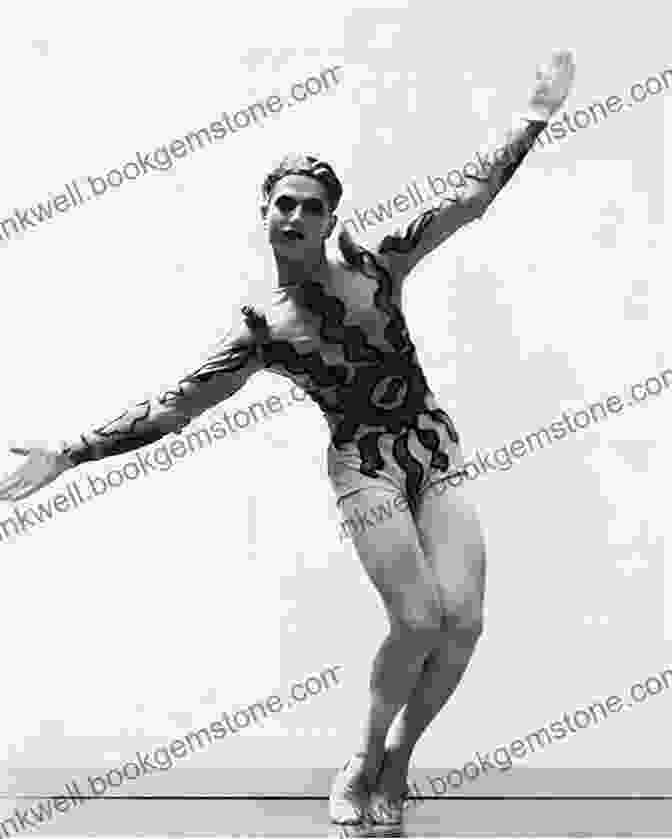
Alt Text:** Serge Lifar, a renowned dancer and choreographer, performing a gravity-defying leap during an interwar French ballet performance.
**Image 2:**
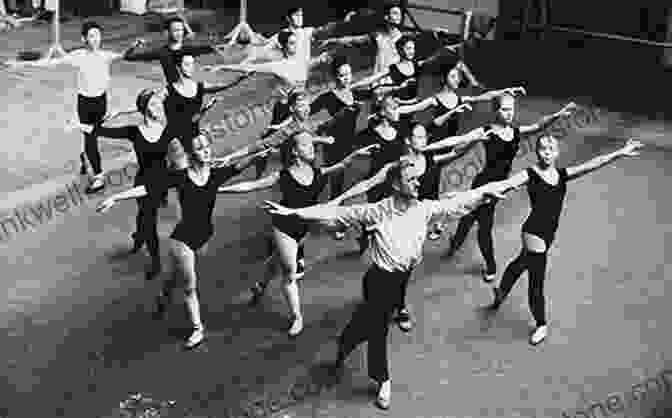
Alt Text:** French ballet dancers practicing their art in secret during the German occupation, demonstrating their resilience and determination to preserve their art form.
**Image 3:**

Alt Text:** A vibrant poster showcasing the post-war resurgence of French ballet, with the Roland Petit Ballet promising a captivating performance.
5 out of 5
| Language | : | English |
| File size | : | 31943 KB |
| Text-to-Speech | : | Enabled |
| Screen Reader | : | Supported |
| Enhanced typesetting | : | Enabled |
| Print length | : | 291 pages |
| Lending | : | Enabled |
Do you want to contribute by writing guest posts on this blog?
Please contact us and send us a resume of previous articles that you have written.
 Best Book
Best Book Page Flip
Page Flip Bookshelf
Bookshelf Literary loom
Literary loom Chapter
Chapter Bookish
Bookish PageTurner
PageTurner Bibliophile
Bibliophile Story
Story Inkwell
Inkwell Bookworm
Bookworm Labyrinth
Labyrinth Plot Twist
Plot Twist Prose
Prose Paperback
Paperback Storyteller
Storyteller Sanctuary
Sanctuary Fiction
Fiction Reading
Reading Chronicle
Chronicle Read
Read Tessa Bailey
Tessa Bailey Derek Murphy
Derek Murphy Tina Fey
Tina Fey Wendy Lesser
Wendy Lesser Wes Moore
Wes Moore Joe Holt
Joe Holt Michael Mcbride
Michael Mcbride Edwidge Danticat
Edwidge Danticat Wing Over
Wing Over Maurice White
Maurice White Luca Turin
Luca Turin Sloan De Forest
Sloan De Forest Scott Eyman
Scott Eyman Matteo Cossu
Matteo Cossu Jane Maday
Jane Maday Randy Wayne White
Randy Wayne White Richard Fortey
Richard Fortey Jody Houton
Jody Houton Laurence Maslon
Laurence Maslon Nicholas Turner
Nicholas Turner Michael Ferber
Michael Ferber Richard Huber
Richard Huber Emerson Hough
Emerson Hough Michael Lakin
Michael Lakin Emily Colson
Emily Colson Emily Craft By Maker Academy
Emily Craft By Maker Academy J R Ward
J R Ward Elizabeth Mowry
Elizabeth Mowry Prakruti Prativadi
Prakruti Prativadi Tahir Shah
Tahir Shah Kim Brown Seely
Kim Brown Seely Bruno Munari
Bruno Munari Sara Boccaccini Meadows
Sara Boccaccini Meadows Arthur C Danto
Arthur C Danto Dustin Graham
Dustin Graham Joi Barrios
Joi Barrios George Kubler
George Kubler Duncan Barrett
Duncan Barrett Gabriela Jauregui
Gabriela Jauregui Gina S
Gina S Edward Willett
Edward Willett Dervla Murphy
Dervla Murphy Dermot Mcevoy
Dermot Mcevoy Gananath Obeyesekere
Gananath Obeyesekere Ryan Kane
Ryan Kane T C Edge
T C Edge Elizabeth Stansberry
Elizabeth Stansberry Emiliano Zapata
Emiliano Zapata Ralph Kern
Ralph Kern Roger Kahn
Roger Kahn R S Penney
R S Penney Robyn Neild
Robyn Neild Edward Brody
Edward Brody Edward Victor
Edward Victor Sarah Turnbull
Sarah Turnbull Elaine Bertolotti
Elaine Bertolotti E E Knight
E E Knight Jan Kunz
Jan Kunz Whitney Chadwick
Whitney Chadwick William Kent Krueger
William Kent Krueger Logan Jacobs
Logan Jacobs Maria Arango Diener
Maria Arango Diener Jasmine Guillory
Jasmine Guillory Stephanie Elizondo Griest
Stephanie Elizondo Griest Jeff Lenburg
Jeff Lenburg Yuri Leving
Yuri Leving Maggie Nelson
Maggie Nelson Naglaa Ghali
Naglaa Ghali Edward Struzik
Edward Struzik John Dominic Crossan
John Dominic Crossan Eddie Armer
Eddie Armer Greg Manning
Greg Manning Diane Keaton
Diane Keaton Hugh Iwanicki
Hugh Iwanicki Jack Campbell
Jack Campbell Skywatcher Press
Skywatcher Press Brett Tate
Brett Tate Elin Hilderbrand
Elin Hilderbrand Marvin Kalb
Marvin Kalb Nella Larsen
Nella Larsen Eat Like A Local
Eat Like A Local Gary K Wolf
Gary K Wolf Taylor Dibbert
Taylor Dibbert Tom Cole
Tom Cole Diane Seuss
Diane Seuss Mark Cooper
Mark Cooper Rory Moulton
Rory Moulton Ruth Reichl
Ruth Reichl Elle Wright
Elle Wright Edgar Allan Poe
Edgar Allan Poe Tom Ryan
Tom Ryan Shimrit Elisar
Shimrit Elisar Sean D Young
Sean D Young Imbolo Mbue
Imbolo Mbue John Michael Rivera
John Michael Rivera Dylan Birtolo
Dylan Birtolo Sergey Skudaev
Sergey Skudaev Rick Partlow
Rick Partlow Robert D Armstrong
Robert D Armstrong Jim Krause
Jim Krause William Blake
William Blake Sylvia Kristel
Sylvia Kristel Joe Greer
Joe Greer Jennifer Clement
Jennifer Clement Dorothy Grant
Dorothy Grant Charles Dellheim
Charles Dellheim Ethan Casey
Ethan Casey Octavia Hyde
Octavia Hyde E E Smith
E E Smith Jasper Rees
Jasper Rees Hannah Dale
Hannah Dale Neil Lancaster
Neil Lancaster Tilar J Mazzeo
Tilar J Mazzeo Liza Rodman
Liza Rodman Edward Burns
Edward Burns Daniel Ankele
Daniel Ankele Edwin George Lutz
Edwin George Lutz Stephen Clarke
Stephen Clarke Iceberg Slim
Iceberg Slim Emma Block
Emma Block Peter F Drucker
Peter F Drucker Jacob Burckhardt
Jacob Burckhardt E B Dawson
E B Dawson Dk Eyewitness
Dk Eyewitness Kellye Garrett
Kellye Garrett Michael Marshall Smith
Michael Marshall Smith Jared Blando
Jared Blando Elizabeth Brundage
Elizabeth Brundage Doug Gelbert
Doug Gelbert Jim Green
Jim Green Joy Harjo
Joy Harjo Eli Brook
Eli Brook Sylvia Foster
Sylvia Foster Elizabeth L Eisenstein
Elizabeth L Eisenstein Judy Botello
Judy Botello Eloisa James
Eloisa James Violet Kupersmith
Violet Kupersmith Martha Bayne
Martha Bayne James W Stanfield Jr
James W Stanfield Jr William Silvers
William Silvers Dr Leo Henry Wildeman
Dr Leo Henry Wildeman Gabriel Miller
Gabriel Miller T M Haviland
T M Haviland Glenn Rudin
Glenn Rudin Edwin Harkness Spina
Edwin Harkness Spina Loretta Outwater Cox
Loretta Outwater Cox Rosecrans Baldwin
Rosecrans Baldwin W R Tymms
W R Tymms Roark Bradford
Roark Bradford Hadley Freeman
Hadley Freeman Paul J Foster
Paul J Foster Desmond King
Desmond King Kassanna
Kassanna Rilzy Adams
Rilzy Adams Dick Durham
Dick Durham James A Michener
James A Michener Peter Spiegelman
Peter Spiegelman John G Neihardt
John G Neihardt Douglas Segal
Douglas Segal Jackie Simmonds
Jackie Simmonds Mark Twain
Mark Twain Joanne Fink
Joanne Fink L L Richman
L L Richman Johannes Zang
Johannes Zang Tarana Burke
Tarana Burke Christopher Hart
Christopher Hart Rachel Aaron
Rachel Aaron Michael Showalter
Michael Showalter Riad Sattouf
Riad Sattouf Devon C Ford
Devon C Ford Darin Martineau
Darin Martineau Daniel Gross
Daniel Gross C Pierce Salguero
C Pierce Salguero Josef Feller
Josef Feller Mala Kacenberg
Mala Kacenberg Max Fatouretchi
Max Fatouretchi Dominick Dunne
Dominick Dunne Dick Jackson
Dick Jackson Izzy Paskowitz
Izzy Paskowitz Francesco Lo Iacono
Francesco Lo Iacono Leslie Buck
Leslie Buck Paper Monument
Paper Monument Patrick Syme
Patrick Syme Dr Cecil H H Mills
Dr Cecil H H Mills Grigori Grabovoi
Grigori Grabovoi Peter Lord
Peter Lord Emma Svensson
Emma Svensson Meb Keflezighi
Meb Keflezighi John Matthews
John Matthews Victoria Christopher Murray
Victoria Christopher Murray John S C Abbott
John S C Abbott Emily Scherb
Emily Scherb Terry Bennett
Terry Bennett Kyle West
Kyle West Phil Maxey
Phil Maxey Jessica Hische
Jessica Hische Ladoris Hazzard Cordell
Ladoris Hazzard Cordell Jennie Smallenbroek
Jennie Smallenbroek Nancy Reyner
Nancy Reyner Stu Lloyd
Stu Lloyd Geoff Kersey
Geoff Kersey Paris Permenter
Paris Permenter Gustave Dore
Gustave Dore Tulku Thondup
Tulku Thondup Pam Young
Pam Young E M Forster
E M Forster Mark Franko
Mark Franko Edmund S Wong
Edmund S Wong Eduardo Galeano
Eduardo Galeano Miss Jazzie
Miss Jazzie Ellen Grady
Ellen Grady Olga Lengyel
Olga Lengyel Christine A Collins
Christine A Collins Ellen Besen
Ellen Besen Margarita Gokun Silver
Margarita Gokun Silver Elizabeth Alexander
Elizabeth Alexander Ina Saltz
Ina Saltz Duncan M Webb
Duncan M Webb Steven M Barrett
Steven M Barrett William V Dunning
William V Dunning Diana Marcum
Diana Marcum Elise Mahan
Elise Mahan Matt Johnston
Matt Johnston Lynne M Thomas
Lynne M Thomas Kensuke Okabayashi
Kensuke Okabayashi Graham Webb
Graham Webb Langston Hughes
Langston Hughes Nai
Nai Jeanne St James
Jeanne St James Jonathan Sacks
Jonathan Sacks Vera Nazarian
Vera Nazarian S J Pajonas
S J Pajonas Diana O Gilvie
Diana O Gilvie Jonathan Yanez
Jonathan Yanez Karen Karon
Karen Karon Jonathan Smidt
Jonathan Smidt Roz Marshall
Roz Marshall Emily Carr
Emily Carr Luigi Amara
Luigi Amara Sari Botton
Sari Botton Mindy Mejia
Mindy Mejia John F Harnish
John F Harnish L X Beckett
L X Beckett Jamie Eubanks
Jamie Eubanks Robert E Howard
Robert E Howard Paul E Cooley
Paul E Cooley Elena Gorokhova
Elena Gorokhova Malcolm X
Malcolm X C M Carney
C M Carney Maria Nolasco
Maria Nolasco Giuseppe Cristiano
Giuseppe Cristiano Harry Whitewolf
Harry Whitewolf Peter Carey
Peter Carey Ruth Leaf
Ruth Leaf Elizabeth Bonesteel
Elizabeth Bonesteel Eduardo Navas
Eduardo Navas Michael R Pitts
Michael R Pitts Joseph Toone
Joseph Toone Eliza Ruhamah Scidmore
Eliza Ruhamah Scidmore Scott Kloos
Scott Kloos Uncle Brazil
Uncle Brazil Didier Ghez
Didier Ghez Matt Fox
Matt Fox Madeleine Orban Szontagh
Madeleine Orban Szontagh Robert M Utley
Robert M Utley Megan Hess
Megan Hess Kevin Kwan
Kevin Kwan Louis Blanc
Louis Blanc Bil Donovan
Bil Donovan Kate Lock
Kate Lock Tom Shone
Tom Shone Yoshitomo Ikawa
Yoshitomo Ikawa Rohan M Vider
Rohan M Vider Nicholas Gill
Nicholas Gill Victoria Lewis
Victoria Lewis Jean Muenchrath
Jean Muenchrath Emil Draitser
Emil Draitser Gavin Strange
Gavin Strange Emma Gift
Emma Gift Paul Noble
Paul Noble Eddy De Wind
Eddy De Wind Patti Smith
Patti Smith Sebastien De Castell
Sebastien De Castell E John B Allen
E John B Allen Benjamin R Jordan
Benjamin R Jordan Jamie K Schmidt
Jamie K Schmidt Tracy Brown
Tracy Brown Phil Kelly
Phil Kelly Helene Cixous
Helene Cixous Peter Cristofono
Peter Cristofono Thomas Shor
Thomas Shor Stanley Vestal
Stanley Vestal Paul Cornell
Paul Cornell Maya Washington
Maya Washington David A Robertson
David A Robertson El Griffin
El Griffin Francis Hopkinson Smith
Francis Hopkinson Smith Jean Pierre Isbouts
Jean Pierre Isbouts Mike Yoshiaki Daikubara
Mike Yoshiaki Daikubara John Dickie
John Dickie Manifestation Publishing House
Manifestation Publishing House Ed Hooks
Ed Hooks Tess Burrows
Tess Burrows Jupiter Kids
Jupiter Kids G Eric Francis
G Eric Francis Mary Jane Jacob
Mary Jane Jacob Jeff Long
Jeff Long Gene Perret
Gene Perret Richard Detrich
Richard Detrich Vasily Mahanenko
Vasily Mahanenko Modris Eksteins
Modris Eksteins Isidra Mencos
Isidra Mencos Kelley Swain
Kelley Swain Elizabeth Becker
Elizabeth Becker Edvard Munch
Edvard Munch Jill Culiner
Jill Culiner Linda Riesenberg Fisler
Linda Riesenberg Fisler Ellen Winner
Ellen Winner Edgar A Whitney
Edgar A Whitney Lady Dia
Lady Dia Elizabeth Wenk
Elizabeth Wenk William Dalrymple
William Dalrymple Jeff Pearlman
Jeff Pearlman Tjio Kayloe
Tjio Kayloe Loki Renard
Loki Renard Lauren Beukes
Lauren Beukes Lisa Kleypas
Lisa Kleypas Luke Zimmermann
Luke Zimmermann Nathan Hystad
Nathan Hystad Richard Tongue
Richard Tongue Mulk Raj Anand
Mulk Raj Anand Vladimir Alexandrov
Vladimir Alexandrov John Sandford
John Sandford Eliot Peper
Eliot Peper Dorothy Dent
Dorothy Dent Elizabeth Size
Elizabeth Size Mint Editions
Mint Editions Matthew Farrer
Matthew Farrer Rebecca Solnit
Rebecca Solnit Edward Branigan
Edward Branigan Nicholas Wapshott
Nicholas Wapshott Phyllis Klotz
Phyllis Klotz Sarah Lentz
Sarah Lentz John Anthony Davis
John Anthony Davis Robert Ullian
Robert Ullian Brian Dougherty
Brian Dougherty E M Hardy
E M Hardy Zongyan Hu
Zongyan Hu Arlo Adams
Arlo Adams Eric Gill
Eric Gill Drmw
Drmw Kurt Meissner
Kurt Meissner Marcel Liebman
Marcel Liebman Hillary Kerr
Hillary Kerr Ronald Malfi
Ronald Malfi Tiffany Dufu
Tiffany Dufu Karen Campbell
Karen Campbell Kale James
Kale James Rosie Mercado
Rosie Mercado Grace Hamilton
Grace Hamilton Elizabeth Faidley
Elizabeth Faidley G A Matiasz
G A Matiasz Thomas Booth
Thomas Booth Elizabeth Kendall
Elizabeth Kendall Joey Korenman
Joey Korenman Zarifa Ghafari
Zarifa Ghafari Patricia Telesco
Patricia Telesco Spike Bucklow
Spike Bucklow Donna Everhart
Donna Everhart Douglas Phillips
Douglas Phillips Peter Marren
Peter Marren Zachary Fenell
Zachary Fenell Rylee Tipton
Rylee Tipton George Catlin
George Catlin Jean Luc Nancy
Jean Luc Nancy Michael Arndt
Michael Arndt Elijah Nicholas Wilson
Elijah Nicholas Wilson Phuc Tran
Phuc Tran Thad Carhart
Thad Carhart Regis Yaworski
Regis Yaworski Jonathan Coe
Jonathan Coe Janet Wood
Janet Wood Sei Shonagon
Sei Shonagon Nichole Perkins
Nichole Perkins Jm Guillen
Jm Guillen Kate Stevens
Kate Stevens Maria Hinojosa
Maria Hinojosa Marina Bakasova
Marina Bakasova James Goddard
James Goddard Kevin Brownlow
Kevin Brownlow Frank Right
Frank Right James Joseph
James Joseph Emily Byrne Curtis
Emily Byrne Curtis John Brunner
John Brunner Diane Kochilas
Diane Kochilas Jason Caldwell
Jason Caldwell Rachel Mclean
Rachel Mclean Robert N Charrette
Robert N Charrette Geniuz Gamer
Geniuz Gamer James Egan
James Egan Dianne Pineda Kim
Dianne Pineda Kim James A Moore
James A Moore Roberta Carter Clark
Roberta Carter Clark Thomas Crow
Thomas Crow Pablo Hidalgo
Pablo Hidalgo Gabriella Contestabile
Gabriella Contestabile L D Goffigan
L D Goffigan Karen Kluglein
Karen Kluglein Nina Garcia
Nina Garcia Jeff Farr
Jeff Farr Robert Bree
Robert Bree Paul Doyle
Paul Doyle Mark Stattelman
Mark Stattelman Emily Hahn
Emily Hahn Kristal Wick
Kristal Wick Kareem Aal
Kareem Aal Sarah Pinsker
Sarah Pinsker William Silvester
William Silvester Jana Marcus
Jana Marcus John Brewer
John Brewer Jade Royal
Jade Royal Clarence King
Clarence King Kiese Laymon
Kiese Laymon Tim Travis
Tim Travis El Greco
El Greco Kelly Speck
Kelly Speck Jian Ping
Jian Ping Eric Pyle
Eric Pyle Richard Tabor Greene
Richard Tabor Greene Jane Evans
Jane Evans S R Witt
S R Witt Susan Elizabeth Jones
Susan Elizabeth Jones Nick Hunt
Nick Hunt Lexie Winston
Lexie Winston Elie Wiesel
Elie Wiesel Edward M Lerner
Edward M Lerner Donald Hamilton
Donald Hamilton Sanyika Shakur
Sanyika Shakur Valerie Boyd
Valerie Boyd Faythe Levine
Faythe Levine Lewis Knight
Lewis Knight Language Learning University
Language Learning University James Dickey
James Dickey Lewis Hector Garrard
Lewis Hector Garrard Jamie James
Jamie James Larry Mcmurtry
Larry Mcmurtry Radim Malinic
Radim Malinic Michel Prince
Michel Prince David Bergsland
David Bergsland Dennis E Taylor
Dennis E Taylor Bruce Cook
Bruce Cook Douglas Johnson
Douglas Johnson Ben Swanepoel
Ben Swanepoel Steve Balderson
Steve Balderson Dessy Tsolova
Dessy Tsolova Sam Baldwin
Sam Baldwin Julie Kavanagh
Julie Kavanagh Harry Harrison
Harry Harrison Insight Guides
Insight Guides Jason Tselentis
Jason Tselentis Michelle Lawson
Michelle Lawson Victoria Shearer
Victoria Shearer Elizabeth Kincaid
Elizabeth Kincaid Roger Scruton
Roger Scruton Jacques Derrida
Jacques Derrida Insight Traveller
Insight Traveller Don Peri
Don Peri Joy Deja King
Joy Deja King Joel Enos
Joel Enos Henrietta Harrison
Henrietta Harrison Dom Joly
Dom Joly Keeyla Meadows
Keeyla Meadows Jackie Barrass
Jackie Barrass Ralph Cotton
Ralph Cotton Kurt Vonnegut
Kurt Vonnegut Dima Zales
Dima Zales Pedro Martinez
Pedro Martinez Robert E Kapsis
Robert E Kapsis Karen Redrobe Beckman
Karen Redrobe Beckman Chris Legaspi
Chris Legaspi Yehuda Koren
Yehuda Koren Michael R Jacobs
Michael R Jacobs Moritz Fink
Moritz Fink Michael Dante Dimartino
Michael Dante Dimartino Mika Tufuga Valai
Mika Tufuga Valai Jesse Storm
Jesse Storm Diana Somerville
Diana Somerville Neil Baldwin
Neil Baldwin Ed Sikov
Ed Sikov Kate Betts
Kate Betts Diane Greenberg
Diane Greenberg Mark Farnsworth
Mark Farnsworth Doris Lessing
Doris Lessing Elizabeth Miki Brina
Elizabeth Miki Brina Edward Sylvester Ellis
Edward Sylvester Ellis Jesse Mccarthy
Jesse Mccarthy Kristen Dutkiewicz
Kristen Dutkiewicz Laura A Macaluso
Laura A Macaluso Orson Scott Card
Orson Scott Card Ruth Wilshaw
Ruth Wilshaw Edward Chisholm
Edward Chisholm Edith Young
Edith Young Janet Wilcox
Janet Wilcox Elena Tchernichova
Elena Tchernichova Nicholas Woodsworth
Nicholas Woodsworth David Archer
David Archer Elaine A Powers
Elaine A Powers Ashleynicole
Ashleynicole Toby Neal
Toby Neal S Rob
S Rob Janet Lynn Cano
Janet Lynn Cano Eric Rickstad
Eric Rickstad Sarah Nisbett
Sarah Nisbett Rebecca Fraser
Rebecca Fraser Lisa Rose Wright
Lisa Rose Wright Wendy E Simmons
Wendy E Simmons Wensley Clarkson
Wensley Clarkson Latin Travel
Latin Travel Pm Johnson
Pm Johnson Shaunna Russell
Shaunna Russell Patrick Youngblood
Patrick Youngblood Arthur C Clarke
Arthur C Clarke Nan Sanders Pokerwinski
Nan Sanders Pokerwinski Jean Le Pautre
Jean Le Pautre Helen Keller
Helen Keller Lucy Coleman
Lucy Coleman Ferrett Steinmetz
Ferrett Steinmetz Debra Kayn
Debra Kayn Neil Bennion
Neil Bennion Daniel Verastiqui
Daniel Verastiqui Mary Wellesley
Mary Wellesley Dori Griffin
Dori Griffin Richard Goodman
Richard Goodman Ebony Roberts
Ebony Roberts Simon Gervais
Simon Gervais Jennifer Frick Ruppert
Jennifer Frick Ruppert Luana Luconi Winner
Luana Luconi Winner Diane Wilson
Diane Wilson Lynne Pickering
Lynne Pickering Eva Marie Magill Oliver
Eva Marie Magill Oliver Jonathan Green
Jonathan Green Michael Eric Dyson
Michael Eric Dyson Rosemary Mahoney
Rosemary Mahoney Mia Leonin
Mia Leonin Reed Farrel Coleman
Reed Farrel Coleman Rick Furphy
Rick Furphy Gregory Curtis
Gregory Curtis Emily Haynes
Emily Haynes Susanna Kaysen
Susanna Kaysen Noah Galloway
Noah Galloway Julian Armfield
Julian Armfield Raymond L Weil
Raymond L Weil Ellisa Bender
Ellisa Bender Devin Harbison
Devin Harbison Halka Chronic
Halka Chronic Elizabeth Bear
Elizabeth Bear Dennis Banks
Dennis Banks Alberto Manguel
Alberto Manguel Marc Steinberg
Marc Steinberg Eric Thomas
Eric Thomas Michael R Fletcher
Michael R Fletcher Laura Vae Gatz
Laura Vae Gatz Lea Rawls
Lea Rawls Wanda M Morris
Wanda M Morris Booker T Washington
Booker T Washington Anthony J Melchiorri
Anthony J Melchiorri David A Price
David A Price Megan K Stack
Megan K Stack Ellen Eagle
Ellen Eagle Christopher Johns
Christopher Johns Wilfrid Jonson
Wilfrid Jonson Tanya Talaga
Tanya Talaga Tessa Hadley
Tessa Hadley Greg Simonds
Greg Simonds Ellen Murkison
Ellen Murkison Emma Baxter Wright
Emma Baxter Wright Rose Art
Rose Art Hernan Diaz
Hernan Diaz James R Lilley
James R Lilley Jenni Basch
Jenni Basch Dr Harpal Sodhi
Dr Harpal Sodhi Lindsey Pogue
Lindsey Pogue Rachel Polonsky
Rachel Polonsky Scott Olsen
Scott Olsen Robyne Leblanc
Robyne Leblanc
Light bulbAdvertise smarter! Our strategic ad space ensures maximum exposure. Reserve your spot today!

 Kendall WardWatson and Holmes: A Sci-Fi Retelling - Unraveling the Mysteries of the 23rd...
Kendall WardWatson and Holmes: A Sci-Fi Retelling - Unraveling the Mysteries of the 23rd... Hector BlairFollow ·2.4k
Hector BlairFollow ·2.4k Craig BlairFollow ·3k
Craig BlairFollow ·3k Oliver FosterFollow ·16.9k
Oliver FosterFollow ·16.9k Benji PowellFollow ·2.8k
Benji PowellFollow ·2.8k Donovan CarterFollow ·15.8k
Donovan CarterFollow ·15.8k Robin PowellFollow ·5.3k
Robin PowellFollow ·5.3k Ervin BellFollow ·10.9k
Ervin BellFollow ·10.9k Diego BlairFollow ·4.5k
Diego BlairFollow ·4.5k
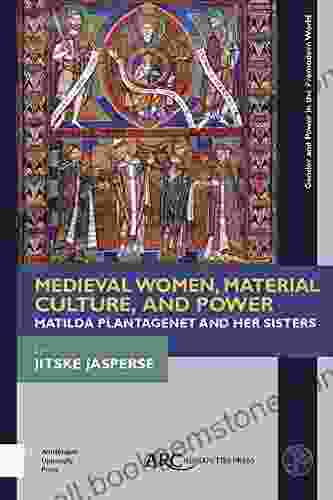
 Dennis Hayes
Dennis HayesMatilda Plantagenet and Her Sisters: Gender and Power in...
The lives of Matilda Plantagenet and her...

 Carl Walker
Carl WalkerA Comprehensive Guide to Defining Yourself or Your...
In today's competitive world, it's...

 Eliot Foster
Eliot FosterThe Civilization of the Renaissance in Italy: Classics,...
The Renaissance was a period of great cultural...

 Floyd Richardson
Floyd RichardsonUnveiling the Roadside Geology of Colorado: A Halka...
Colorado, a state renowned for its...
5 out of 5
| Language | : | English |
| File size | : | 31943 KB |
| Text-to-Speech | : | Enabled |
| Screen Reader | : | Supported |
| Enhanced typesetting | : | Enabled |
| Print length | : | 291 pages |
| Lending | : | Enabled |


